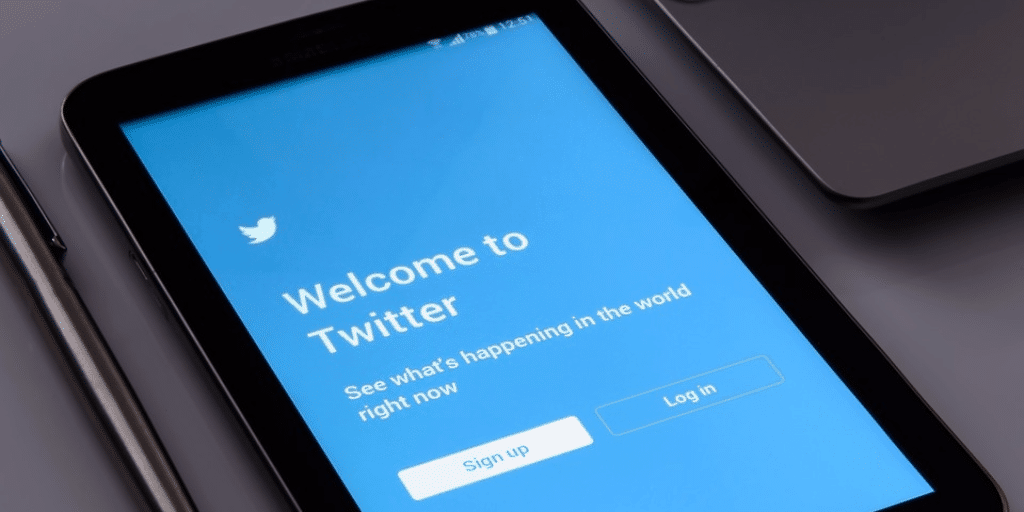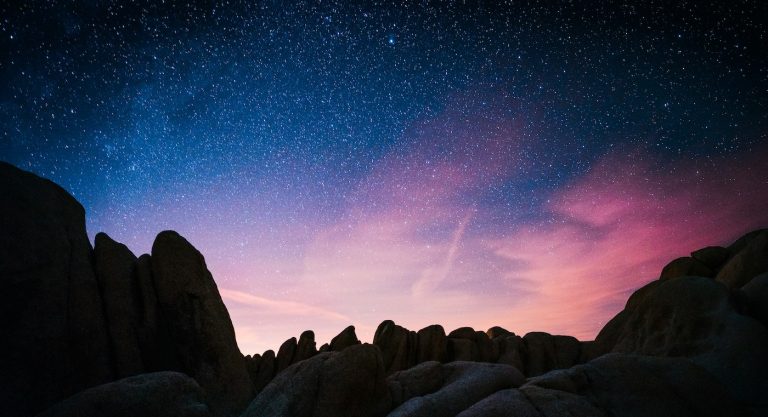
Twitter, the social network that offers real-time updates and requires brevity, is no longer growing. How did this happen and what should Twitter do to get back on even keel?
I’ve spoken to James Tozer of The Economist to get the full story. Have a listen to the interview on iTunes, SoundCloud or keep reading for a summary.
Tell us about The Economist and what you do there please?
Sure thing. So “The Economist,” obviously most famous for its print newspaper, it’s been producing one for about 170 years now. In recent years, in the last 20 years, the paper has been supplemented by online coverage which has been much more broad and covers a whole range of topics from culture, sports, religion, lifestyle, loads of different things. And for most the time the paper’s been online, the digital side of things we’re seen as a supplement to the print.
I was employed as a digital analyst and a data analyst to look at how our content is being read online, and on apps and by social media. And it’s been really interesting because since I’ve been here, there’s been a very noticeable change and an acceleration in the amount of resources and attention the paper’s been looking at its online presence.
There’s now a really beefed-up social media team, they’re responsible for pushing our content out on loads of different platforms. I’m part of an ever expanding data team that looks at how our content is performing. There’s now a very much a global news desk, there’s always someone available to like sort of publish things, stories that are ready to go online. So it’s been a really interesting period of transition and progress.
What’s Twitter all about and why do people use it?
Twitter was founded in 2006, a couple years after Facebook, but in that era, and in some ways, Twitter’s initial proposition was close to Facebook in that it was a way of people to connect with one another and share information about their lives. But, in some ways it’s very different from Facebook. It has a very different proposition in the sense that Facebook very quickly became like a locker of things that exist in your life, it was a personal record of all your photos, of your holidays, of your life experiences and a way of sharing those things with your friends.
Twitter became more of a soap box, here you would share your opinions, and sort of narrate what you were thinking about. Big issues at any given time and obviously there was a degree of overlap. People share photos and talk about their daily lives on Twitter and they also use Facebook statuses to talk about how they’re feeling about, about big issues at any given time, but there’s very much the sense I think early on that Twitter became more of a platform whereas Facebook became a social network. And Twitter accordingly got this reputation and image as being a bit wonkish, as being sort of the people who are particularly interested in sort of, you know, policy or technology.
And also had a very different user demographic than Facebook, I think. Like when I was growing up, I grew up in the year when Facebook and Twitter were sort of kicking off. And most of my friends and peers were on Facebook and sharing what was happening about their lives. But only a very select few were on Twitter and those who were on Twitter were using it as a way to engage with politics or breaking news, rather than updating their lives. And so over time, I think Facebook became this sort of general record of daily life that almost everyone, certainly in the Western world has some kind of contact with or interaction within and Twitter became this separate kind of sphere of people sharing their opinions, and keeping track of breaking news and big stories.
What challenges is Twitter faced with at the moment?
When we talk about evolution it’s really interesting if you look at, you know, again if you compare with Facebook because it’s the obvious comparison. When you look at their early uptake of monthly active users and they both for the first five or six years of their existence had a very straight upwards line in terms of every quarter, they’re gaining more and more users. And then what seems to happen to Twitter, well, it was very clear, what happens to Twitter at the start of 2015 it just levels off. Twitter’s seems to have reached this natural ceiling of 300 million monthly users, and it can’t seem to get beyond that. It’s sort of found its maximum audience.
Whereas Facebook has continued to grow and it looks like it’s going get to two billion at some point. And I think one of the reasons why Twitter reached this critical mass, but never managed to get beyond it is as you say, you know, one of the problems is trolls. Another problem is generally speaking I think the user experience on Twitter was not as friendly or as accessible to people as the one on Facebook was because, you have these problems with trolls. You have these problems with loads of junk. Accounts that were clearly bots or spam. And also it was because Twitter had no algorithm or no way of rating content. If you were just a standard person who wasn’t famous or wasn’t involved in a news organization or whatever, and you were just on there to share your opinions, it was like shouting into a thunderstorm because there was just so much content for it being put out by publishers and celebrities, and you know, you’d get drowned out as a personal user on Twitter which is why I think, lots of people would try it for the first time. You know, send a couple of tweets, realize that no one was paying any attention to them and hit the road and never used it again.
Whereas on Facebook, the opposite happened because it was entirely based around personal interactions. As soon as you started posted things on there, your friends would engage with you, and so there was a real reason to keep coming. So, I think that was Twitter’s real problem and it continues to be its biggest problem; just from a usage point of view it’s not easily accessible. And you really have to work to get into it and to feel like you’re getting value out of it. Whereas on Facebook immediately you’ll link with friends and everything you do is seen by your friends.
Twitter will need to make bigger changes than @TwitterMoments to attract new users https://t.co/nQhZfFk7sy pic.twitter.com/rXBUWNByPd
— The Economist (@TheEconomist) September 19, 2016
And I think if that was the core problem with Twitter, is that it wasn’t good at holding on to people that then sparked a whole load of bigger problems, corporate problems. The fact that they can’t grow anymore, that they’re really startling to grow has obviously led to massive turmoil. At the corporate level, Jack Dorsey has come back as the CEO in order to try to drive the company forward but that hasn’t been enormously or obviously successful yet. They had a very high turnover in terms of management stuff. Last year there were a lot of very senior people leaving. The share price has stagnated.
So I mean really, it’s a case of that core usage problem spiraling down into a massive existential problem for Twitter about, what’s going happen to it now? It can’t get any bigger. Does that mean it’s going to shrink or go away or what’s going to happen to it? And I think not many people have a very clear answer to that. I don’t think there is a clear answer yet. So yeah, so I think that’s the main problem and things have sort of spiraled off from it.
When we talk about threats to Twitter from other platforms, I still think there’s not been a platform that’s been developed yet that can rival Twitter in terms of its qualities as a soap box, or a platform for expressing opinions because obviously there are things like, in terms of sort of throw away comments that you share with your friends. Snapchat has really cornered that so that Twitter is no longer the place you go to share an update in 20 words or whatever. Snapchat is now there for that.
Instagram has obviously taken over this corner of the web for sharing quick photos along with Snapchat. Messenger is there. Facebook Messenger is there for small personal interactions but I don’t think there’s any platform yet that has been able to rival Twitter for laying out your opinions and commenting about big events that are going on. So even though it has this user experience problem, I still think of broader image of what’s going to happen to it over the next couple of years, it’s safe from the threat of being replaced by something completely.
Is that the right strategy for a company in turmoil to have a part-time CEO?
The reason they’ve brought him back is because he was the guy who had the magic beans at the beginning that grew this massive beanstalk, and understood the very core values of what the platform was about, and why it was important to people. So in that sense, bringing him back made sense, because there was this sense that Twitter had lost its way and didn’t know what it wants to be anymore. And so having someone back who knew exactly why it had been invented in the first place made sense. But, yeah, I mean from what I understand, at Twitter’s headquarters, this is something we mentioned in an article recently, there’s the sense that having a CEO who’s both meant to be the knight in shining armor and is only around for, a certain portion of any given week is not necessarily ideal and there are possibly morale problems surrounding that. It’s not the most motivating thing if the guy who’s meant to be saving your company isn’t always there. So from that point of view it’s probably not an ideal situation to have.
I mean the other thing as well is that Jack Dorsey’s flagship policy or change that he was, had pinned his return to was Twitter Moments. It’s very hard to get data on how much usage Twitter Moments gets. But, “The Economist” experimented with it a little bit but didn’t see enormous returns from it. When you look at the overall activity on Twitter Moments it hasn’t really been an enormous success. And I think one of the reasons why is that it took the company more towards being a news wire service and you’re almost sort of ticker of what’s going on the world, rather than personalizing it and making it easier for you to interact with people on the platform. And so I think it didn’t really deal with the core problems surrounding Twitter which is that ordinary people can’t interact with one another on it.
Can @Jack Dorsey save Twitter while spending half his time on @Square? https://t.co/aTVmzM67hk pic.twitter.com/TjAIeRqlX7
— The Economist (@TheEconomist) September 19, 2016
What can Twitter do to turn its fortune around?
I think usability and UX are really important because as I’ve said, it works as a soap box. It’s a good way for influential people, like Donald Trump is a classic example of someone who’s used Twitter very effectively of getting up and saying what they want to say. But the problem is for ordinary people what you say gets lost and so what you need is to have a better system, like what you say gets seen and engaged with by other people in your circle. You know, friends and other ordinary people because otherwise there’s no point of you putting it out there. And I think one of the things that Twitter has started to do which suggests that it might be able to turn its problems around and seems like a very sensible innovation is an algorithm on the feed which is obviously, one of the very basic tenets of Twitter was that there was no algorithm.
And it was just a live feed and it just updated as it went. And Facebook was the algorithm platform so if you wanted curated stuff, you went to Facebook. And if you just wanted a live scroll of what was going on, you went to Twitter. But because Twitter has put an algorithm on, it means that when you log back in what pops up at the top of your feed is a sort of while you’re away feature, which tends to include people that you are friends with, rather than a deluge of updates from a media company that you’ve followed. And so that means that you have a better idea of what your peers and colleagues are talking about and you can then engage with that. One of the things you’ll see now in your feed is tweets that other people close to you have liked and that you might be interested in. So there’s a lot more curation going on which is I think is giving people a much better user experience and means that if you’re new to the platform and you show up for the first time, you no longer get this feeling of sort of being a lone voice in the desert. There are people listening to you and you feel more engaged with the platform.
And I think there are loads of people who have used Twitter before for the first time, come on to it, had an awful user experience, left and they might never be recovered. But for new people coming to Twitter for the first time, I get the sense that it’s going be a more accessible experience for them and they’re not going be as turned off by it. And I think working around that and working around having a highly curated, enjoyable, relatable experience on Twitter will be the way that they can serve and possibly start to grow their user base again.
Should marketers start to dial down their investment into Twitter before it turns into the next Google+ like ghost town?
Sure, I think the problem with Google+ is that I mean it was a ghost town from the beginning. Everyone signed in, but no one did anything with it. Whereas Twitter at least, people have always done stuff on Twitter. There’s always been a critical mass of stuff happening. So, I don’t think Twitter is going to disappear entirely. One of the really interesting things that we’ve seen from a data perspective is that, at “The Economist” our following on Twitter is growing all of the time, but actually, the number of people seeing any individual tweet is shrinking. So there’s two possible reasons for that.
The first is that no one is logging in anymore and so your tweets just aren’t being seen by anyone. But the second, is that lots of people are logging in but because Twitter has introduced algorithmic element only certain users are seeing your tweets, or the personal tweets of people they know being prioritized at the top of their feed and so they only occasionally get down to the tweets being pushed up by larger accounts, by publishers or by brands, those things being pushed down the feed. And if that is the case, then what it suggests to me is that any given post that you put on Twitter is going to get less attention than before, which means that, you need to adjust your expectations accordingly. If you’re putting out say a couple hundred posts a week and you used to gain, X number of impressions and Y number of referrals to your website. You should probably expect those numbers to go down because your tweets are getting seen by fewer people. And, you need to manage that accordingly. You need to make sure that if you’re paying money behind a branded campaign you know you’re going to expect slightly smaller returns because your tweet’s being seen by fewer people.
But on the other hand, while that’s true in the short-term, the brands posting on Twitter might see less return on any given posts they put out. In the long-term if this curation element means that more people are joining Twitter and retaining their accounts, then it’s going be good for the brands and publishers right, because there will be a bigger audience there and even if any given tweets are being seen by fewer people, having a bigger audience means that you can potentially reach more people. In short, I think marketers should be prepared for a little bit of short-term pain perhaps in terms of the potential reach they’re getting from their campaigns, but if Twitter can use these changes to increase the following, I think in the long-term it’s possible that Twitter will start to pick up again. It’s current trajectory doesn’t suggest that it’s gonna turn into a sort of empty platform like Google+ or MySpace.
What does the future hold for Twitter in particular and social media in general?
Well, I think Twitter’s changes in the last few months, it’s moved towards a more algorithmic experience. I think that’s indicative of a much larger trend for social networks because it’s far from the only one, right, to adopt an algorithm. Instagram now has an algorithm. You’re not just seeing everything that your friends are posting. It’s being curated for you. LinkedIn has an algorithm. Facebook is the most famous example of something with an algorithm. All of these platforms now, I think everyone has looked at Facebook and asked, “What did they do right that other platforms didn’t?” and the answer is that they really they paid enormous amount of attention to the user experience and made sure that any person logging in had the most relevant stuff put in front of them.
And I think lots of other platforms now are having to catch up to do that. To make sure that people have a reason to keep coming back. It’d be interesting to see, how that plays out in Snapchat, I know that we’ve been playing around with Snapchat Stories and the experience now is very different from the past. It just used to have a screen of channels of publishers that you could click on and then brands. And now, from what I can see, you get a tailored list of them at the top of your Snapchat Stories screen. So I think that any new social platform that pops up in the future that’s going to have to be the first thing they look at. It’s how to tailor whatever experience it is that they are trying to create for individual people. Because otherwise, there are so many networks that exist already, that if you can’t produce one that has some sort of stickiness then, you’re going to struggle.
Follow James on Twitter @JCDTozer.
STAY CONNECTED.
DATA-DRIVEN EMPLOYER
BRAND INSIGHTS.
Our newsletter is exclusively curated by our CEO, Jörgen Sundberg, for leaders who make decisions about talent. Subscribe for updates on The Employer Branding Podcast, new articles, eBooks, research and events we’re working on.



